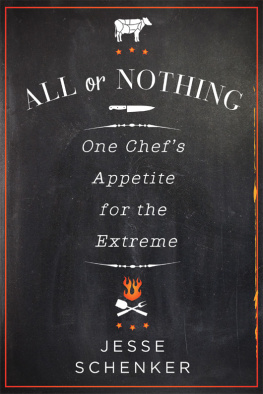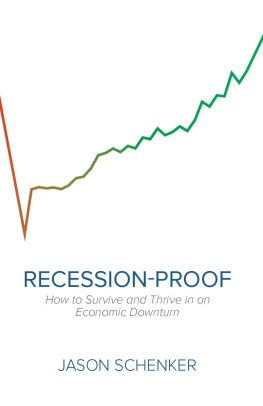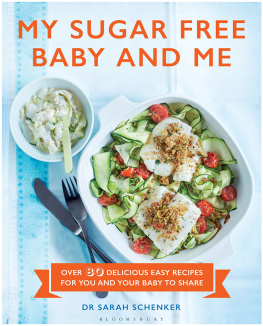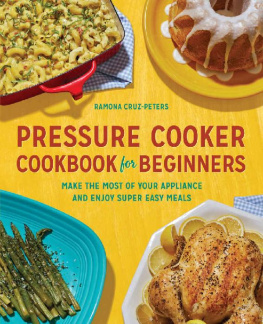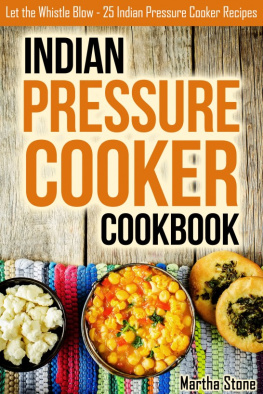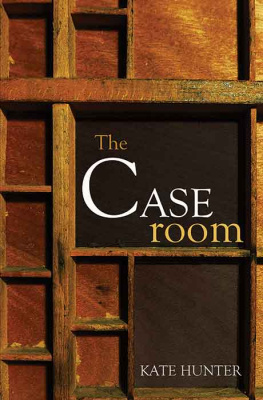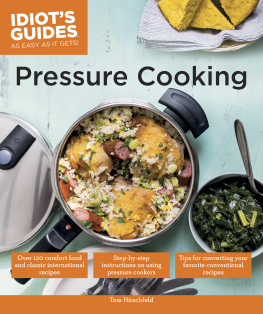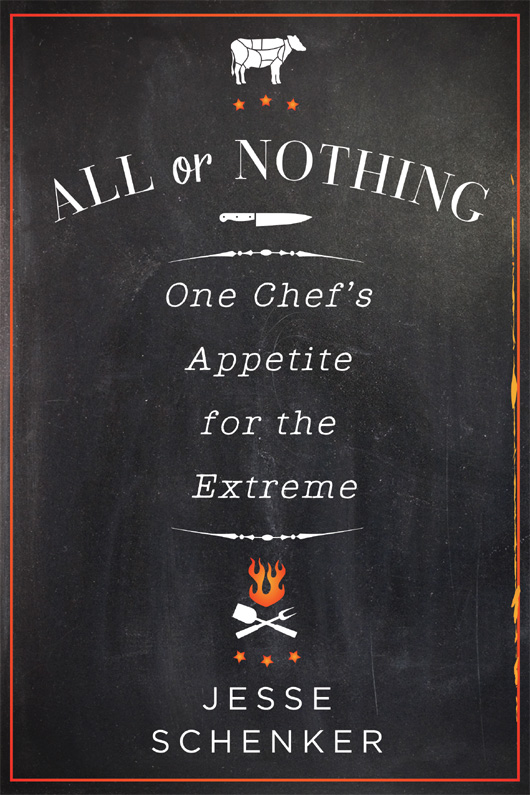To my warrior wife:
Youre the only one who ever truly understands me, and your capacity for love is amazing.
How you continuously manage all that you do with such strength and beauty is remarkable.
Thank you for our two beautiful children and for continuing to love me and stand by me as we build our life together. I am nothing without you.
I love you more than blood.

To my mom and dad:
Today I see and feel what youve known for as long as I have been breathing air.
The love for a childyour love for your childrenis so strong it hurts. You two are amazing in ways I never understood before becoming a parent, too. It was always there; I was just too self-absorbed to see it. Now that I feel that same love for my own children, Im able to fully appreciate and respect everything youve done for me and continue to do every day.
I love you.

Mise en place: A French phrase (putting in place) used in professional kitchens to refer to the organizing and arranging of ingredients that a cook will require during his or her shift.
W hat plate does the fried geoduck go on? I quizzed my sous chef Ed.
The small square, he said, referring to the traditional Japanese plates Id purchased the week before.
Right. And what comes next?
Black bass, wood tea, sardine, chawanmushi, Audrey rattled off. Good. As a sous chef, shed be up at the pass helping me plate, so she had to know the exact order the dishes should be served in by heart. It wasnt easy keeping track of twenty-seven coursesand those were just the savory ones. I glanced around and caught a few frustrated looks passing between the five people on my team. They were tired and cold. Wed been up almost all night getting the elaborate meal ready, and the March evening air still held a gust of winter. But we always sat outside to go over every detail before diving into a completely unknown menu for the first time, and by now I was superstitious.
Most New York City kitchen staffs debut a new menu once each season after months of preparation, but we did it every month with only a week or two to get ready. I knew I was asking a lot, perhaps too much. And this menu, featuring dozens of courses of traditional Japanese ingredients made with French techniques and my own whimsical flair, would be the most difficult to execute yet.
As we sat there going over everything my legs started twitching and my feet started tapping. I couldnt sit still. Without thinking, I jumped up and paced around the small outdoor area. Remember, its not just about the foodit has to be an experience, I lectured. I want theatrics. Everything has to be timed perfectly, the execution spot-on.
Yes, Chef, my cooks said in unison, and then we headed inside to start preparing the meal.
It was only two weeks before that I had taken my wife Lindsay to dinner at Soto on Sixth Avenue and been blown away by the simple yet ingeniously creative dishes, like the Sliced Live Sea Clam Marinated in Truffle Ginger Soy Sauce; Daikon Pickle with Shiso, Bonito Flake, Ginger Shoots, and Pickled Squash; and uni, one of my favorite ingredients, made a dozen different ways, with black soybean milk skin, in a simple soy reduction and wasabi, and in endless sushi and maki roll varieties.
When we got home that night, Lindsay went to check on our one-year-old son Eddie while I jumped on the computer to read every Japanese food blog I could find. After Lindsay went to bed, I walked over to my collection of more than 300 cookbooks and pulled down Nobu: The Cookbook by Nobuyuki Matsuhisa and Morimoto: The New Art of Japanese Cooking by Masaharu Morimoto, then pored over them until the sun came up. By then I had written out the shell of a ten-course tasting menu that I quickly emailed to Christina Han with a note. Lets do a Japanese tasting menu for the next Monday with Jesse.
Eddie was awake by then, and I heard Lindsay begin to stir in the next room. Part of me wanted to stay and spend time with them, to see Eddie for the first time in over twenty-four hours and help Lindsay with his morning routine, but a greater force compelled me to grab my keys and leave the apartment. I had to get to Recette.
A few months after Recette had opened, Id started to feel bogged down by the monotony of cooking the same food day after day, handling the exact same ingredients and meticulously preparing identical plates one after the other. Every time I went out to dinner I was inspired by something I ate, but I knew that it wouldnt work to change Recettes menu too often. Inspired by Tom Colicchios Tom Tuesdays, I came up with the idea of Mondays with Jesse. Once a month I closed down the restaurant and let my imagination run free, coming up with an elaborate tasting menu that allowed me to flex my culinary muscles. I would never put ingredients that I wasnt intimately familiar with, like the traditional Japanese ones, on the regular menu, but Mondays with Jesse gave me license to experiment with new flavors, combinations, and even entire cuisines. Before long, roughly the same group of foodies started coming to these dinners and became my lab rats, allowing me to do in the kitchen what I had always loved mostplay.
These tasting menus always consisted of ten courses, but as soon as I started experimenting with the Japanese menu my imagination ran wilder than ever before. If we served a raw prawn for one course, we could fry the shrimp head and serve it as another. When presenting the raw geoduck clam, why not follow it with a piece of fried geoduck belly? Every time we thought we had the menu finalized I kept adding more coursesfor instance, a play on shrimp toast that we called Salt and Pepper Chicharron; a takeoff on shabu-shabu, with broth that was flavored with fish bones and topped with raw beef; or a spin on bagels and lox that used a crispy bagel chip, whipped tofu instead of cream cheese, and raw Hamachi in place of the salmon.
Even as my staff asked, Are you crazy? Why are we doing so many courses? I kept pushing further. Simply cooking twenty-seven courses wasnt enough for me. I found new ways to make the entire experience more extreme by buying elaborate chopsticks, researching traditional Japanese vessels and cookware, and coming up with yet more dishes to serve.
We had only two weeks to develop each of the recipes from scratch. I wanted to make a chawanmushi, a traditional egg custard that normally consists of dashi and egg and has the consistency of a light crme brle. My idea was to include lobster, so I played around with making lobster truffles by pureeing lobster meat with lobster roe, forming balls out of the puree using plastic wrap, and then steaming them, but they came out too rubbery. Finally, we folded the lobster puree in with the eggs, which turned them bright red, and then served the chawanmushi with raw diced lobster meat tossed with sesame and cilantro on top. The color was striking, and it tasted like an explosion of lobster and egg.
Another dish I was determined to make was a traditional rice ball, or Donburi, but I didnt know how. First I tried cooking white rice and frying it just to see what happened. It was okay, but needed refining. Next I tried overcooking the rice and then laying it out on a sheet pan. I put it in the freezer to set and then cut it into squares and pan-fried them. The outside got nice and crispy, but the inside didnt stay together. I did round after round, often in the middle of the night after Recette was done with service and everyone else had gone home. Finally, we made a rice porridge, drained it, and reserved the liquid, which was starchy and tasted like rice. Once the rice had cooled, we added gelatin and cut the rice into squares that we breaded and fried. The inside was still liquid and burst in your mouth when you took a bite. Delicious. We served it with pork belly and mushroom as the final savory course of the meal.

